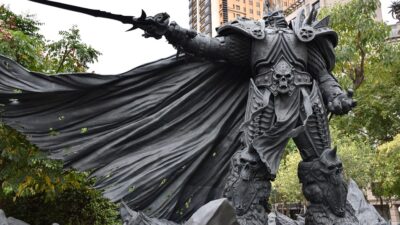Since its inception in 1992, Mortal Kombat has carved out a unique niche in the world of video games, earning praise not only for its groundbreaking gameplay but also for its distinctive visual style. The series has consistently redefined the boundaries of visual storytelling in fighting games, merging gritty realism with exaggerated fantasy. This exploration of Mortal Kombat’s iconic visual style delves into its artistic evolution, influences, and cultural impact.
1. Origins and Aesthetic Foundations
The original Mortal Kombat emerged from the combined vision of co-creators Ed Boon and John Tobias, who sought to create a fighting game that fused martial arts action with cinematic flair. The early use of digitized actors captured on film was revolutionary for its time, giving characters a lifelike feel that contrasted sharply with the pixelated graphics of contemporaries.
Digitized Realism
Utilizing real actors allowed for a gritty realism, serving both to entice players and to heighten the visceral experience of gameplay. Each character was crafted with unique moves and fatalities, but their appearances and animations also reflected their backstories and personalities—elements that would later become hallmarks of the series.
2. Iconic Characters and Visual Identity
The success of Mortal Kombat is inextricable from its memorable characters. Figures like Scorpion, Sub-Zero, and Liu Kang have become cultural icons, each marked by striking visual design elements that convey their unique abilities and lore.
Color and Costume Design
The use of color in character design not only helps players easily differentiate characters but also provides insight into their origins and archetypes. For example, Sub-Zero’s chilling blue attire symbolizes his association with ice powers, while Scorpion’s fierce yellow is emblematic of his hellish vengeance.
Moreover, the blending of Eastern mythology and Western horror creates a rich tapestry that enhances character design. Traditional martial arts attire mingles with elaborate mythology-infused costumes, drawing from a variety of cultural sources—the result being a striking visual juxtaposition that emphasizes the epic clashes at its core.
3. The Evolution of Graphics: From Pixels to 3D
As technology progressed, so too did the visual style of Mortal Kombat. The transition from 2D sprites to 3D models was a pivotal moment for the franchise. Starting with Mortal Kombat 4 in 1997, the move to 3D allowed for more fluid animations and an expanded scope of combat.
Dynamic Environments
With the advent of 3D, Mortal Kombat was able to include more dynamic and interactive environments. Each arena—a central fixture for combat—was carefully designed, featuring distinctive themes, environmental hazards, and interactive elements that enriched the visual experience and allowed for strategic gameplay.
High-Definition Graphics and Cinematics
Mortal Kombat 9 (2011) marked a new era as the franchise embraced high-definition graphics and cinematic storytelling. The cinematic cutscenes introduced with this installment allowed for deeper character development and rich narratives, making each fight feel like a chapter in a larger saga.
4. The Art of Gore: Fatalities and Gore Effects
One of Mortal Kombat’s most defining characteristics is its unapologetic embrace of violence and gore. Fatalities, the finishing moves that players can execute at the end of a match, are not merely graphic but artistically choreographed sequences that vary for each character.
Visual Impact and Style
The stylization of these brutal finishes varies from the grotesque to the absurdly humorous, showcasing an art style that balances horror with theatricality. This duality is a part of what has made the fatalities memorable—they provoke shock, laughter, and awe simultaneously.
5. Cultural Impact and Iconic Legacy
Mortal Kombat’s unique visual style has also generated a significant cultural impact. It has spawned spin-offs, movies, and a massive fanbase that transcends gaming. The series has been instrumental in blurring the lines between video games and other forms of media, with each tableau often being worthy of analysis as independent works of art.
Influence on Other Games
Games such as Tekken, Street Fighter, and various other fighting titles have drawn inspiration from Mortal Kombat. Its bold use of varied aesthetics, intricate character design, and commitment to narrative depth continues to shape the standards for visual storytelling in combat games.
Conclusion
The art of Kombat is not merely a display of visceral action but a compelling narrative stitched together through distinctive visual styles, character design, and cinematic presentation. As Mortal Kombat continues to evolve, it remains a benchmark for innovation and artistic expression. From its pixelated origins to the vibrant, high-definition aesthetics of today, Mortal Kombat exemplifies how visual art can enhance gameplay, storytelling, and cultural resonance in the world of video gaming. As players continue to engage with this iconic franchise, they contribute to an evolving legacy that celebrates the art of combat in all its forms.
